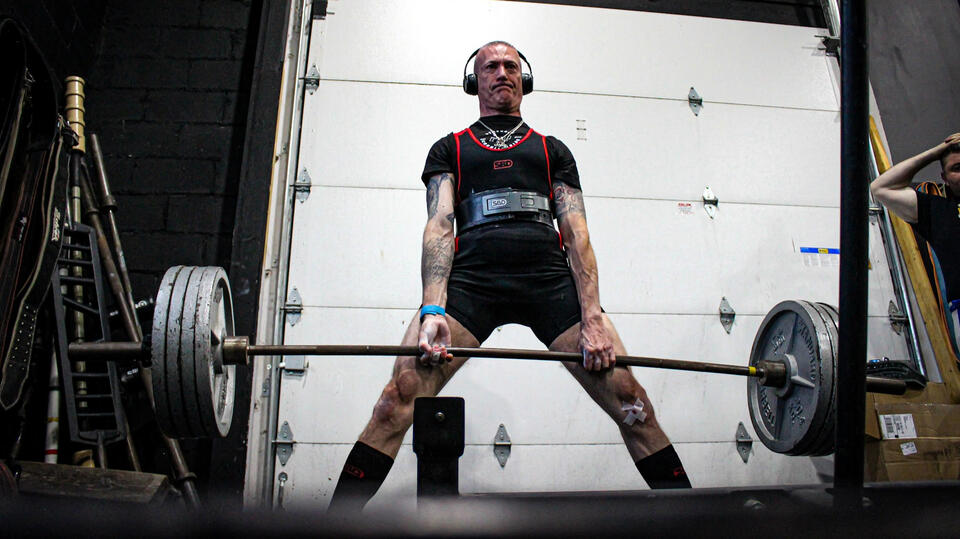
Pelvic Dynamics to Optimize Force Production
April 2025
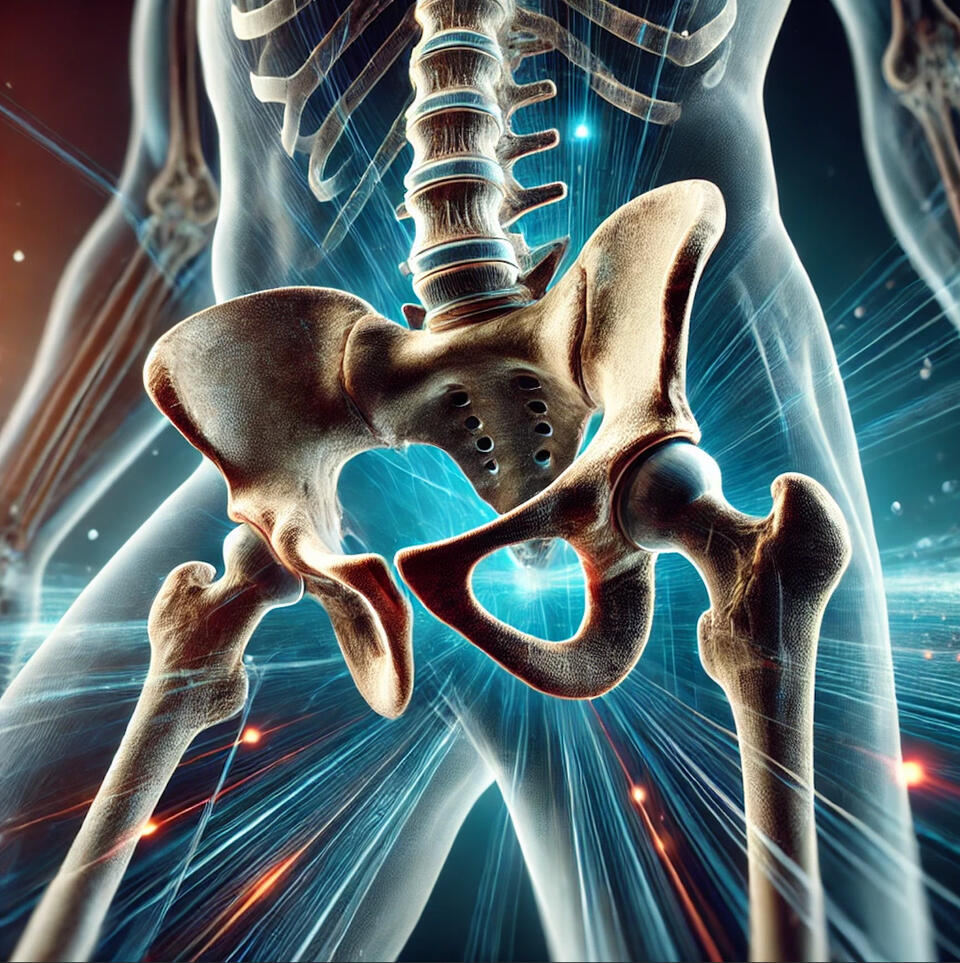
In the world of strength training and athletic performance, the pelvis plays a crucial role in force production, movement efficiency, and overall stability. Understanding pelvic dynamics—how the pelvis moves, changes shape, and influences the rest of the lower body — can significantly impact an athlete’s ability to generate power effectively.
First, let’s look at the bony anatomy of the pelvis:Innominate: the hip bone. Consists of 3 parts: Ilium, ischium, and pubisSacrum: shield-shaped bony structure located at the base of the lumbar spine and connects the two innominate bones together at the sacroiliac (SI joint)
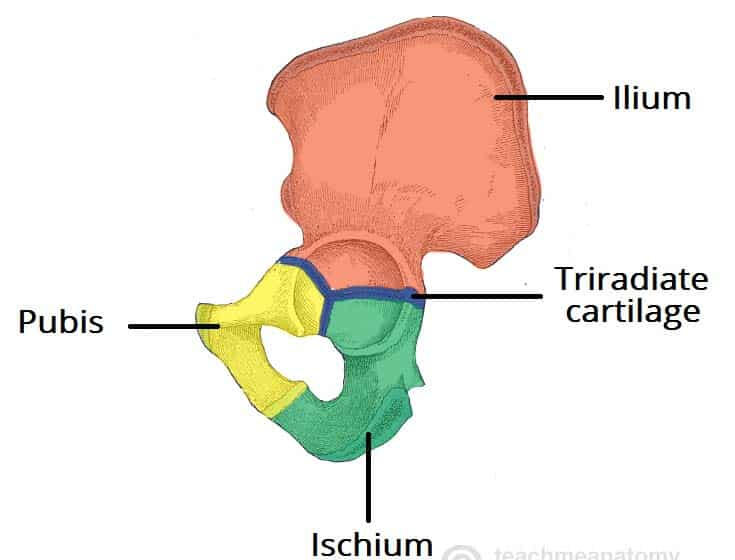
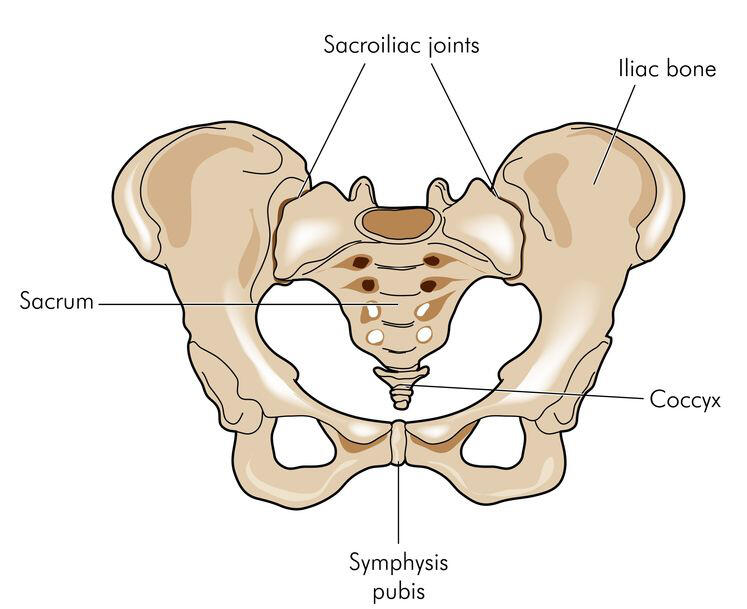
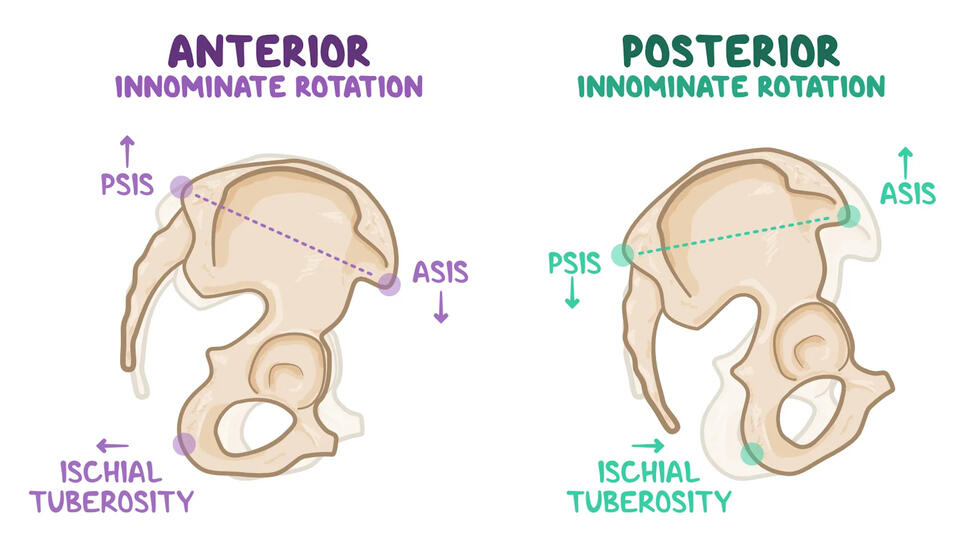
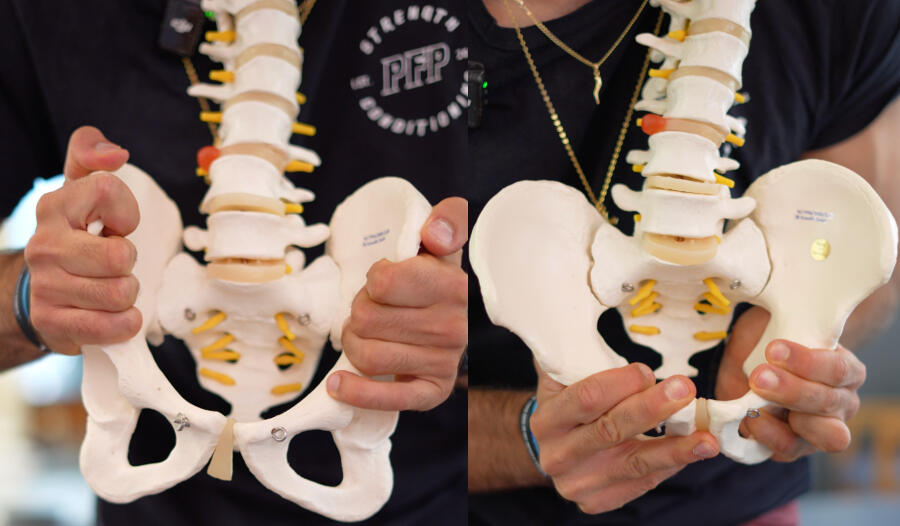
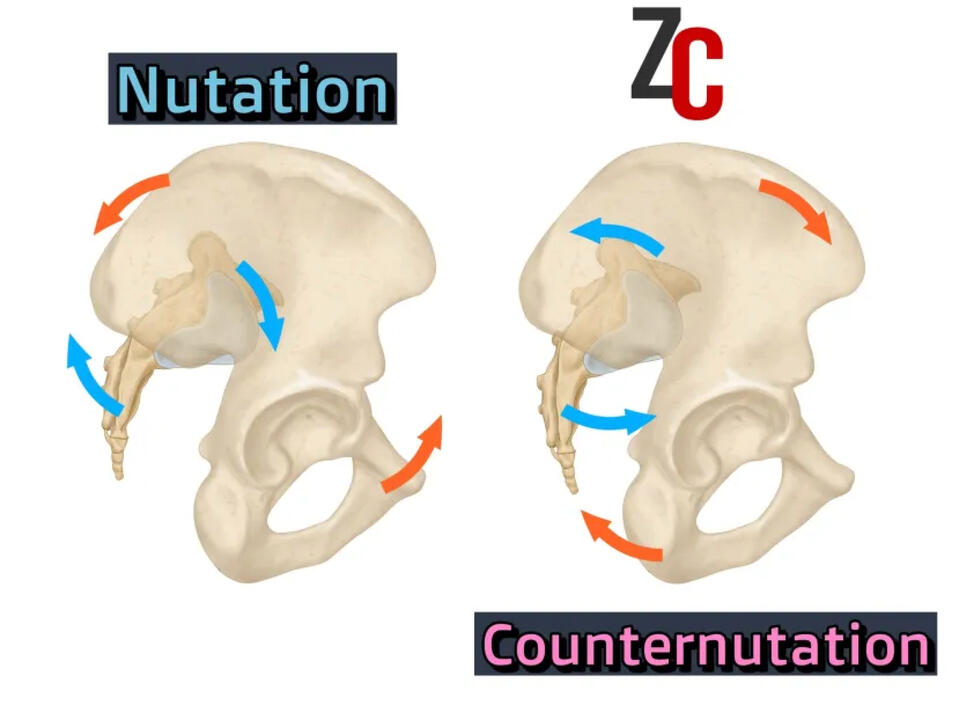
Next, here are all movements and relative motions available at the pelvisAnterior Rotation: the innominate bone tips forward; coincides with sacral counternutationPosterior Rotation: the innominate bone tips backward; coincides with sacral nutationInflare: Top of the innominate bones - Anterior Superior Iliac Spine (ASIS) - are closer to midline; bottom of the innominate bones - Posterior Superior Iliac Spine (PSIS) - move away from midlineOutflare: Top of the innominate bones - Anterior Superior Iliac Spine (ASIS) - are further from midline; bottom of the innominate bones - Posterior Superior Iliac Spine (PSIS) - move closer to midlineAbduction: Ischium and femur move further away from one another; sacrum turning away from that sideAdduction: Ischium and femur move closer together; sacrum turning toward that sideCounternutation: Base (top) of sacrum tips backward as the apex (bottom) moves forwardNutation: Base (top) of the sacrum tips forward as the apex (bottom) moves backward
These subtle pelvic shape changes provide the foundation for optimal movement patterns and can optimize performance. When an athlete lacks access to these segmental movements, the pelvis may move as one locked and rigid unit and orient into a desired position. Such compensations can be an anterior pelvic tilt (for lack of sacral nutation), posterior pelvic tilt (for a lack of sacral counternutation), or even lateral pelvic tilt. These compensatory strategies limit overall efficiency, decreased force production and performance, and lead to potential injury.
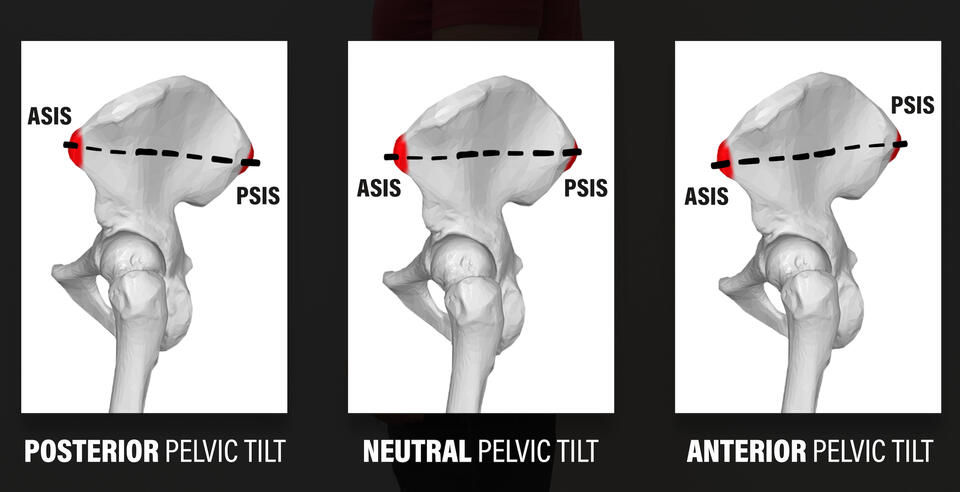
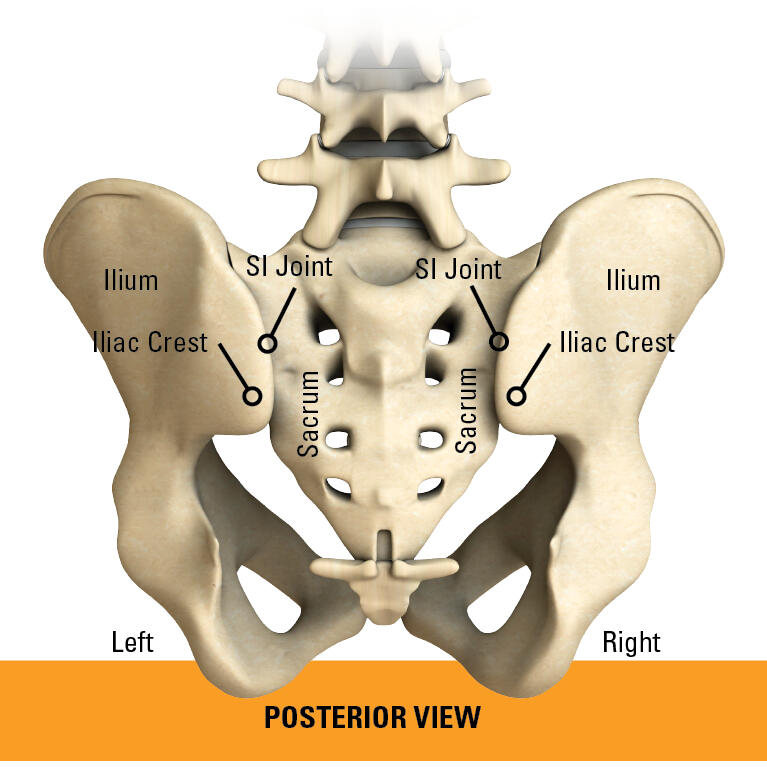
Kiapour et al., 2020 found that movement at the S.I. joint consists of 3º of Nutation / Counternutation (CN), while Cho et al., 2020 reported that movement of nutation and CN ranged from 0.01° to 2.27° in cadavers (AKA, a corpse). Applying these cadaver-based numbers to an alive human body consisting of much more fluid (water, air, blood) may not be the best representative model of how the pelvis actually moves; but, these studies still provide a baseline for pelvic relative motions.Regardless, these small movements of the pelvis can influence muscle activity and movement options available to the athlete, allowing for proper force transfer through the kinetic chain and into the ground.
Before utilizing these relative motions to optimize force production, one must obtain the ability to access these pelvic shape changes. The interaction between breathing mechanics and pelvic relative motions will be the key factor in unlocking the pelvis. Check out what happens to the pelvis during inhalation and exhalation:
Inhalation:1) Diaphragm descends
2) Guts descend
3) Pelvic floor descends
4) Lungs fill up with air from the bottom upThe Inhaled (External Rotation) Pelvis:- Sacral CN
- Anterior Rotation of Innominate Bones
- Larger Pelvic Inlet (to receive descending guts)
- Smaller Pelvic Outlet
- Bias toward Femoral ER, Flexion, Abduction
- Descended Pelvic Floor
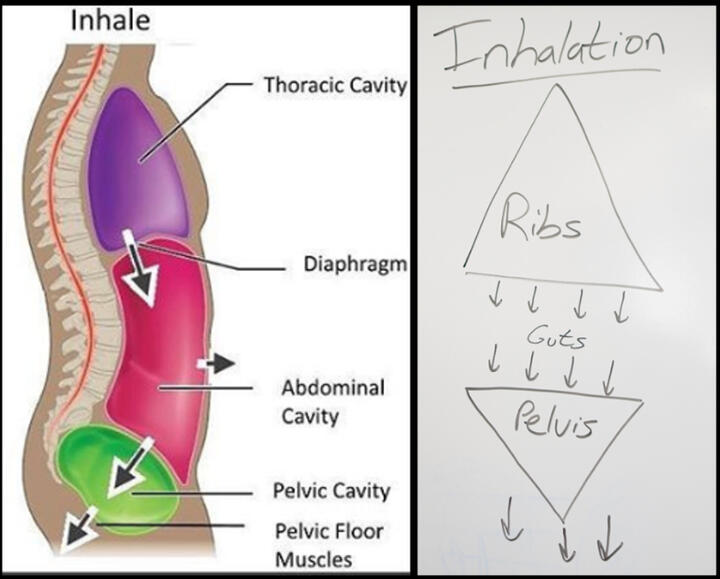

Exhalation:1) Pelvic floor ascends
2) Guts ascend
3) Diaphragm ascends
4) Lungs empty from the top down due to increase pressure generatedThe Exhaled (Internal Rotation) Pelvis:- Sacral Nutation
- Posterior Rotation of Innominate Bones
- Smaller Pelvic Inlet
- Larger Pelvic Outlet
- Bias toward Femoral IR, Extension, Adduction
- Ascended Pelvic Floor
When producing force, pushing into the ground, and lifting weights, you will be biased toward an exhalation (IR) strategy. Exhalation goes hand in hand with exertion; this is why boxers will exhale with every punch they throw to increase force production. This is also why when people are lifting heavy weights you may hear them grunt. These strategies give leverage to the diaphragm and pelvic floor to act like pistons to generate sufficient intra-abdominal pressure (IAP) to not get crushed by a heavy load.Additionally, the associated pelvic shape changes occur when exhaling like this - albeit slightly less when under high compressive loads - which lead to more efficient force into the ground.
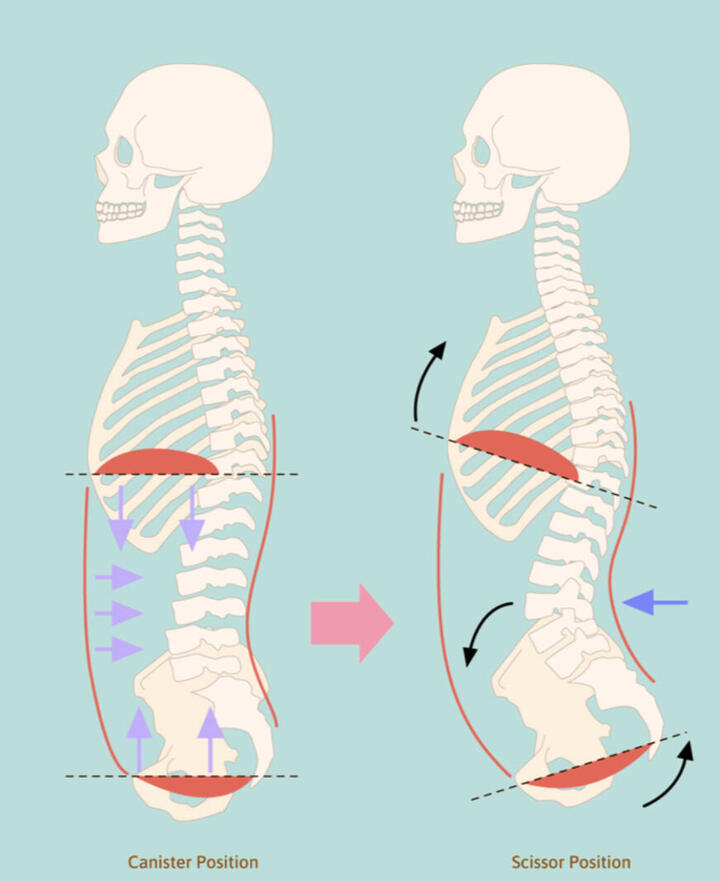
When bracing, athletes and coaches often emphasize external cues like “brace hard” or “push out,” but understanding the deeper mechanics of pelvic dynamics and breathing can refine these strategies for improved performance. “Pushing the stomach outward” is ineffective because the human body moves in the direction in which it expands. If you brace by pushing your belly out (expansion), your guts move down and forward and the pelvis orients as one locked unit into an anterior pelvic tilt. This arches your lower back, flares your lower ribs, and steals any leverage of your diaphragm and pelvic floor to create IAP.
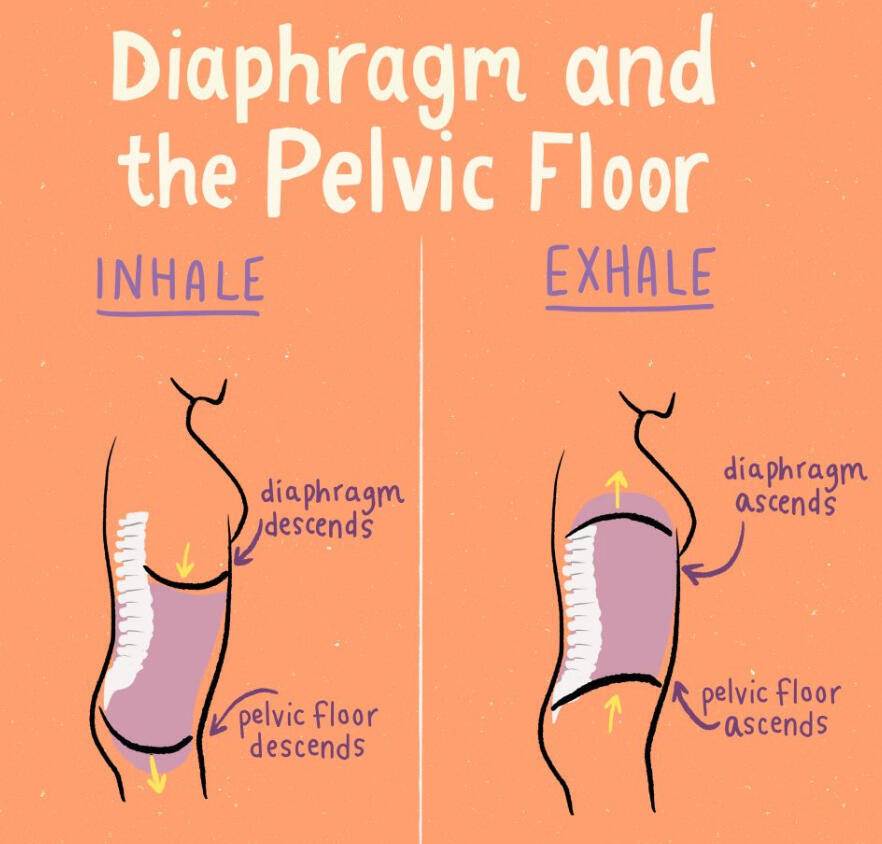
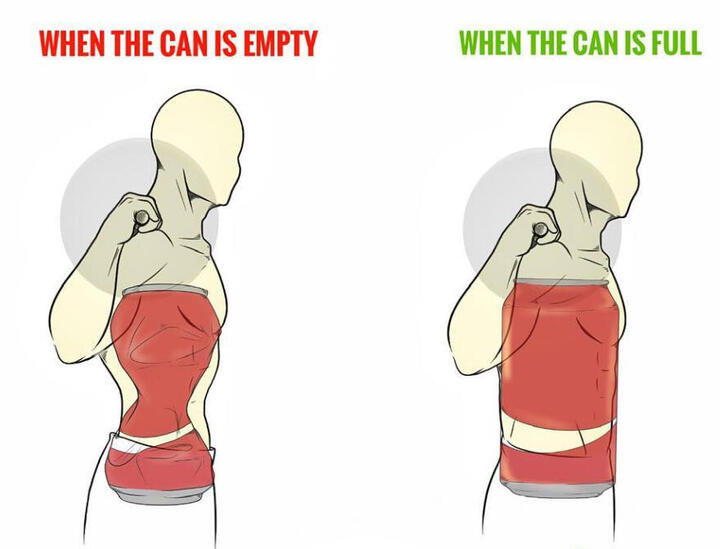
At PFP, to maximize IAP, we teach a full exhale before inhaling and bracing by pushing the side abs and lower back outward. Getting a full exhale ensures the lower ribcage closes, the pelvis changes to the IR / exhaled shape, and the ribcage stays stacked on top of the pelvis. This is the optimal position that can create sufficient pressures that can resist external loads - whether it is a heavy squat bearing down on your back or a heavy deadlift single in your hands. This is similar to stepping on a pressurized soda can—it remains intact under pressure, whereas an unsealed can easily collapses.
Here’s how we suggest optimizing force production in 2 of the powerlifting Big Three: Competition Squats and Competition Deadlifts
Competition Squat:Any load on the backside of the body will push your center of mass (COM) forward, biasing you toward a lower rib flare and an anterior pelvic tilt. This reigns true even more so for those with the low bar position as their competition squat. We suggest before digging into the bar and pushing into the ground, get a full exhale. This will close your lower ribs, lock the ribcage on top of the pelvis by engaging the diaphragm and side abs, and bias the pelvis toward that exhaled / IR shape. From there, you have a solid, pressurized system to have the load on your back.Before you descend, you may need to get another exhale if you lose the tension or lose the stacked ribcage over the pelvis. If not, inhale and brace, feeling the lower back expand and actively pushing the side abs outward. As you descend, you want to keep your breast bone and zipper in line. If you keep your breast bone facing straight forward or even up as you descend, you are extending through the back, losing the stack. From the side, you want to see a straight line through your head, ear, shoulder, and hip and the barbell over the middle of your foot.These foundational principles will lead to the highest amount of efficiency when squatting, adjusting based on each individual's leverages, anatomy, and body types.
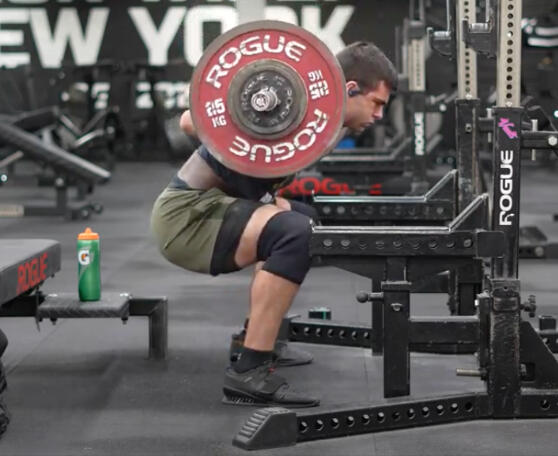
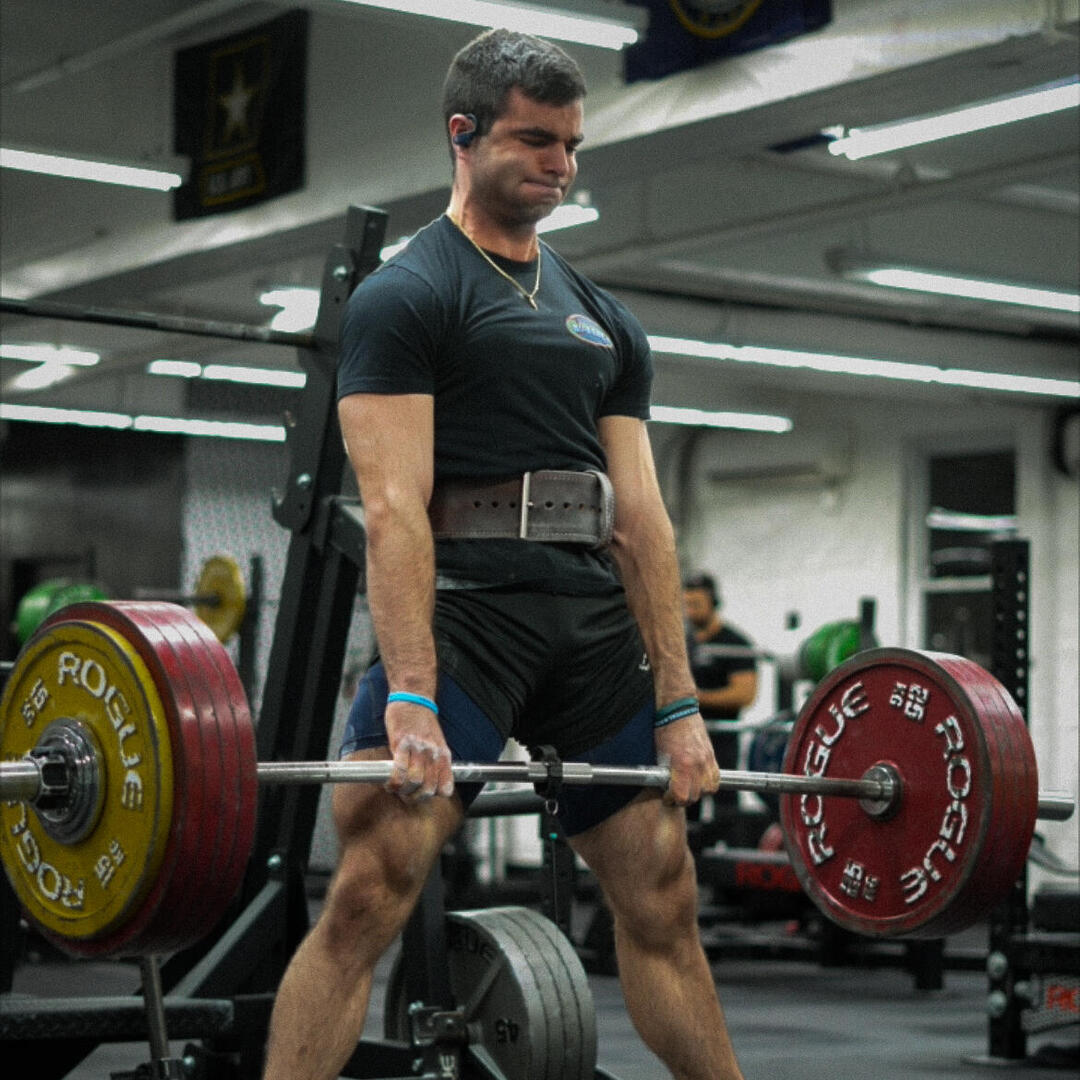
Competition Deadlift:Whether conventional or sumo, the deadlift is the ultimate hinge movement, which corresponds perfectly with the exhaled / IR shape changes of the pelvis. As you saw, the back lower side of the pelvis is open in this pelvic position, which is the space you need in order to hinge into. To set up, before descending to the bar, we suggest reaching your arms forward and long in front of you and getting a full exhale. This will close your lower ribs, lock the ribcage on top of the pelvis by engaging the diaphragm and side abs, and bias the pelvis toward that exhaled / IR shape. From there, you have a solid, pressurized system to have the push into the ground as you descend to the bar.After you grab the bar, you may need to get another exhale if you lose the tension or lose the stacked ribcage over the pelvis. If not, inhale and brace, feeling the lower back expand and actively pushing the side abs outward. You want to feel the weight in the middle of your foot as you push into the ground, as this allows the strongest leg to drive into the ground. This is why when you set up for a deadlift, you line up the barbell with the middle of the foot. From the side, you want to see the armpit over the sleeve of the barbell and a slight negative angle of your arms. This centers the weight perfectly between your upper and lower body, so that the lift becomes a straight push upward from the ground. Lastly, thinking about the deadlift as a “push” into the ground, not a “pull,” will lead to tremendous gains.These foundational principles will lead to the highest amount of efficiency when squatting, adjusting based on each individual's leverages, anatomy, and body types.
Whether aiming to lift heavier, sprint faster, or move more efficiently, the pelvis serves as a foundational pillar in force production. By regaining relative motions of the pelvis, integrating breathing mechanics, and optimizing intra-abdominal pressure by using your diaphragm and exhales before bracing, athletes can achieve greater strength, power, and resilience in their training.
